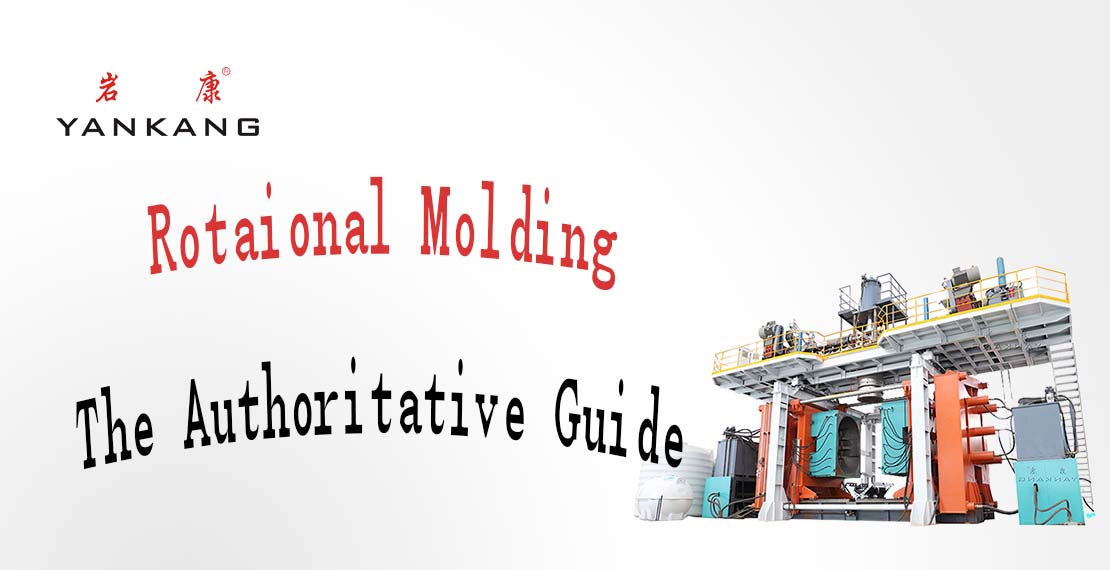Rotomoulding, also called rotational molding, is the topic of this post. You will get the authoritative guide about rotomoulding in one post.
There are many types of plastic processing and molding methods. In addition to injection molding, blow molding, rotomoulding is another common method.
At first, let’s learn the basic principles of rotomoulding.
- Add plastic materials in powder form in the mould;
- Continuously rotating and heating the mould;
- Under the action of gravity and thermal energy, the plastic raw materials in the mould gradually melt evenly coated on the entire surface of the mould;
- After the mold cooling and demoulding, we got the rotational molding plastic products.
And then, we should understand the basic production process of the rotomoulding.
In short, there are 6 steps in this production process:
feeding – heating and rolling – cooling – demoulding – mold cleaning – product processing

Let’s look at each step in detail.
- Feeding: First, put the powder resin and various additives(sometimes also need to mix all materials) into the rotation mold after accurate measurement. And then lock the mold to ensure that the material will not leak out from the closing mold in the process of rotation.
- Heating and rolling: Put the mold with materials into the heating furnace. The mould would oscillation and repeatedly heating. Because the mould is along with the two perpendicular axis rotation, so under the action of gravity, the mould of the material downward slide in the direction of the mold rotation to contact with each point of the cavity wall. At the same time, the heat from the mold wall causes the plastic materials to gradually plasticize and adhere to the entire inner surface of the mold to form the plastic products that we need.
- Cooling: The material inside the mold is uniformly attached to the mold by the rotation and heating. After the surface fully plasticized, the molded plastic is fixed to its shape by cooling.
- Demoulding: Open the mold and take out the plastic product after the machine stops rotating. Generally, we take out the mold manually. In particular, there are also using mechanical demoulding when they are producing in large quantities.
- Mold cleaning: After taking out the products. Remove the debris remaining in the die cavity and the die closing place, such as the flash,to prepare for the next cycle of plastic rolling.
- Product processing: This process includes incisions, covers, accessories, and other auxiliary operations. The processes are different according to products.
Now, you have some knowledge about rotomoulding process.
And next, I will introduce you some disadvantages in rotational moulding.
Let’s go straight to the subject.
- The processing cycle is long, not suitable for mass production;
- The energy utilization rate is low. The liquefaction oil heating, waste a lot of heat energy;
- Molding material selection is limited. Currently, only a small amount of several kinds of materials can be used in rotomoulding. Although nylon, polycarbonate, ABS and other materials also have to use the rotational molding process, the application is very narrow;
- The material cost is higher. It needs to select special additives and made into fine powder;
- Some products are more difficult in the shape of molding;
- Compared to blow molding, it’s difficult to open each discharge products and feed raw materials. The worker’s labor intensity is bigger.
Compared with rotomolding, we will find there are several major advantages in blow molding.
Such as:
- The high strength of blow molding products;
- The weight of the products can be reduced by 30%;
- Manpower can be reduced by 50%;
- Reduce energy consumption per unit by 68%;
- The output increased by 70 times;
- Safety, energy conservation, and environmental protection.
Conclusion:
As the one common plastic molding process method,rotomoulding has been increasingly unable to meet the requirements of production. Blow molding has become the main way of molding plastic products.
If you want to know more about rotomoulding and blow molding, just reading this post: blow molding VS rotomoulding.

